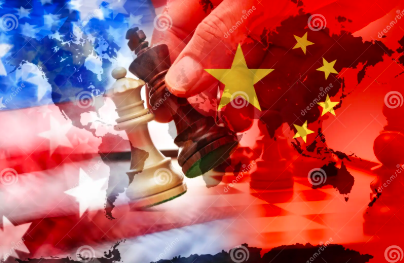Navigating US Tariffs and Smart Investment Strategies
Introduction
The global economy is facing a complex mix of challenges, including inflation, geopolitical tensions, and shifting trade policies. One of the most significant recent developments is the new wave of US tariffs, particularly on Chinese imports, which is reshaping global trade dynamics. Investors must carefully assess these changes to protect their portfolios and capitalize on emerging opportunities.
Current Global Economic Conditions
1. Slowing Growth & Inflation Pressures
Many major economies are experiencing slower GDP growth due to high interest rates, reduced consumer spending, and supply chain disruptions. The IMF projects global growth at 3.2% in 2024, with advanced economies growing at a modest 1.7%, while emerging markets fare slightly better.
Inflation remains a concern, though it has eased from 2022-2023 peaks. Central banks, including the Federal Reserve and ECB, are cautiously considering rate cuts but remain data-dependent.
2. Geopolitical Risks & Trade Wars
The US-China trade war has escalated with new US tariffs on $18 billion worth of Chinese goods, including electric vehicles (100% tariff), semiconductors (50%), and batteries (25%). These measures aim to protect US industries but risk triggering retaliatory actions, disrupting global supply chains, and increasing costs for businesses and consumers.
Europe and emerging markets are also affected, as China may redirect exports to other regions, flooding markets with cheaper goods and hurting local industries.
3. Debt & Fiscal Challenges
Many countries, including the US, Japan, and several EU nations, are grappling with rising debt levels. High borrowing costs strain government budgets, limiting stimulus options in case of a downturn.
Impact of US Tariffs on Global Markets
1. Higher Costs for Businesses & Consumers
US companies relying on Chinese imports (e.g., electronics, EVs, solar panels) face increased production costs, which may be passed on to consumers.
China’s economy could slow further, affecting global demand for commodities and manufacturing inputs.
2. Supply Chain Shifts
Companies are accelerating "friendshoring" (moving production to allied nations like Mexico, India, and Vietnam).
Mexico and Southeast Asia benefit from increased foreign investment as firms diversify away from China.
3. Market Volatility
Tech and green energy stocks may face pressure due to semiconductor and EV tariff risks.
Commodity markets (e.g., lithium, copper) could see fluctuations as trade flows adjust.
Best Investment Strategies in This Environment
Given these challenges, investors should adopt a defensive yet opportunistic approach:
1. Diversify Geographically
Emerging Markets (Ex-China):
India (strong growth, manufacturing incentives)
Mexico (benefiting from US nearshoring)
Vietnam & Indonesia (tech and commodity exports)
Developed Markets:
US defensive stocks (healthcare, utilities)
Japan (weak yen boosts exports, corporate reforms)
2. Focus on Resilient Sectors
Energy & Commodities: Oil, gas, and critical minerals (lithium, copper) remain in demand.
Defensive Stocks: Consumer staples, healthcare, and utilities perform well in uncertain times.
Tech (Selectively): AI, cloud computing, and cybersecurity are long-term winners despite tariff risks.
3. Hedge Against Inflation & Currency Risks
Gold & Bitcoin: Safe-haven assets to hedge against dollar volatility.
Treasury Bonds (Long-term): If the Fed cuts rates, bonds could rally.
4. Consider Dividend Stocks & Real Assets
REITs (Real Estate Investment Trusts): Commercial real estate in growing regions (e.g., data centers, logistics hubs).
Infrastructure Funds: Governments are investing in green energy and transportation.
Conclusion: Staying Ahead in a Fragmented Global Economy
The new US tariffs add another layer of uncertainty, but they also create opportunities in alternative markets and sectors. Investors should:
✔ Diversify across regions (reduce China exposure)
✔ Focus on defensive and high-growth sectors
✔ Monitor central bank policies for rate cut signals
✔ Stay flexible to adapt to geopolitical shifts
By taking a strategic, long-term approach, investors can navigate today’s turbulent economy and position themselves for future gains.

























